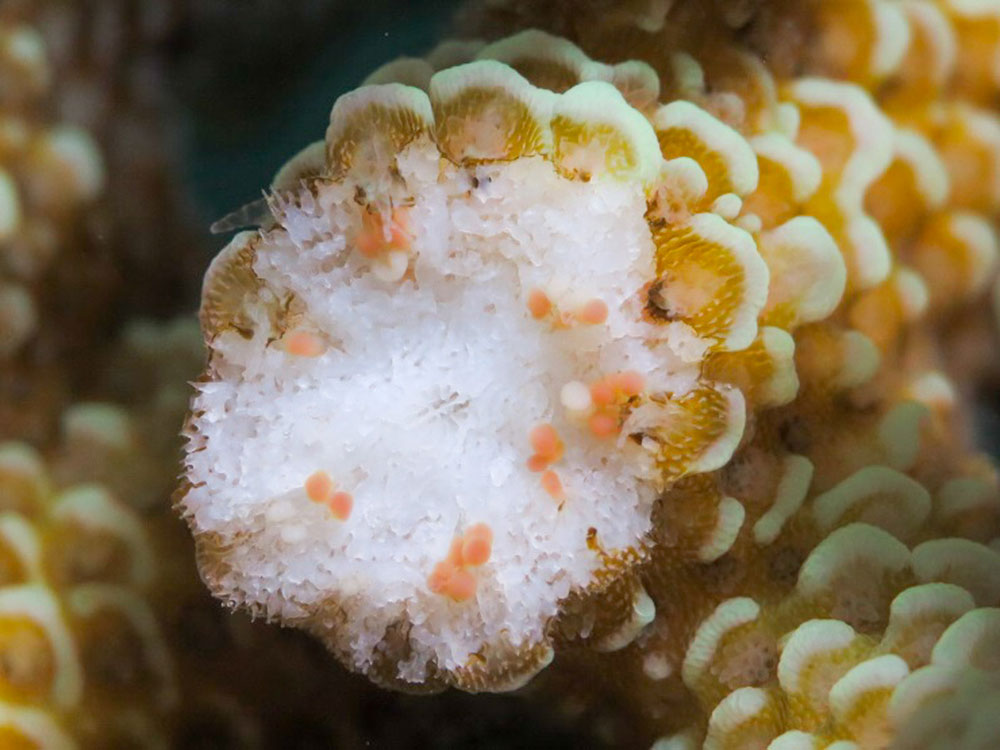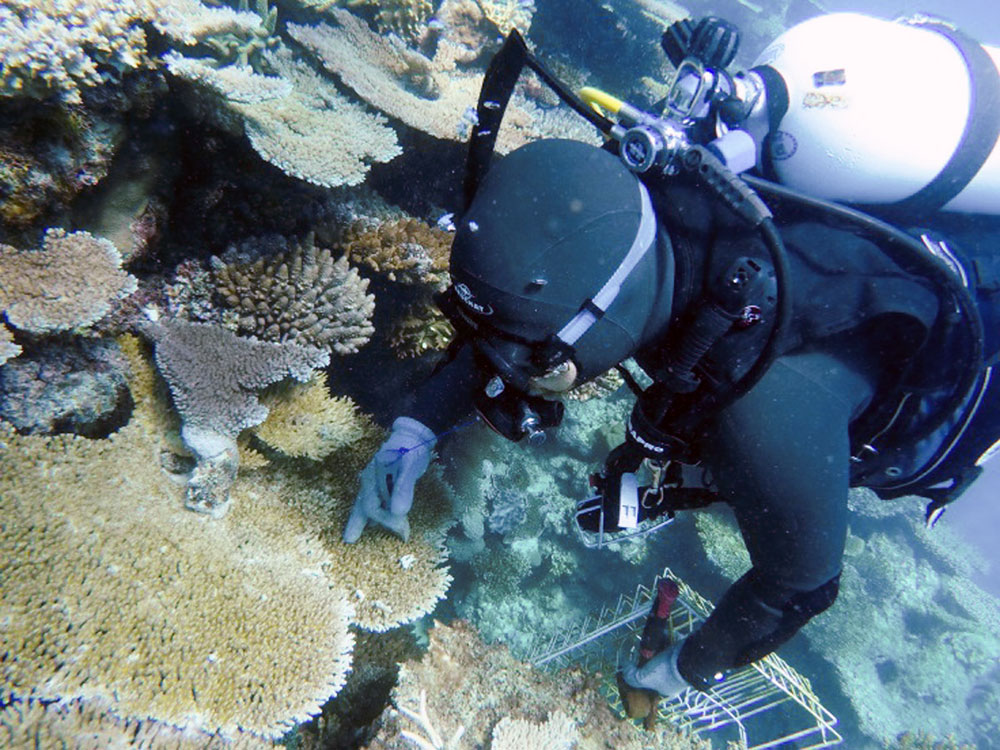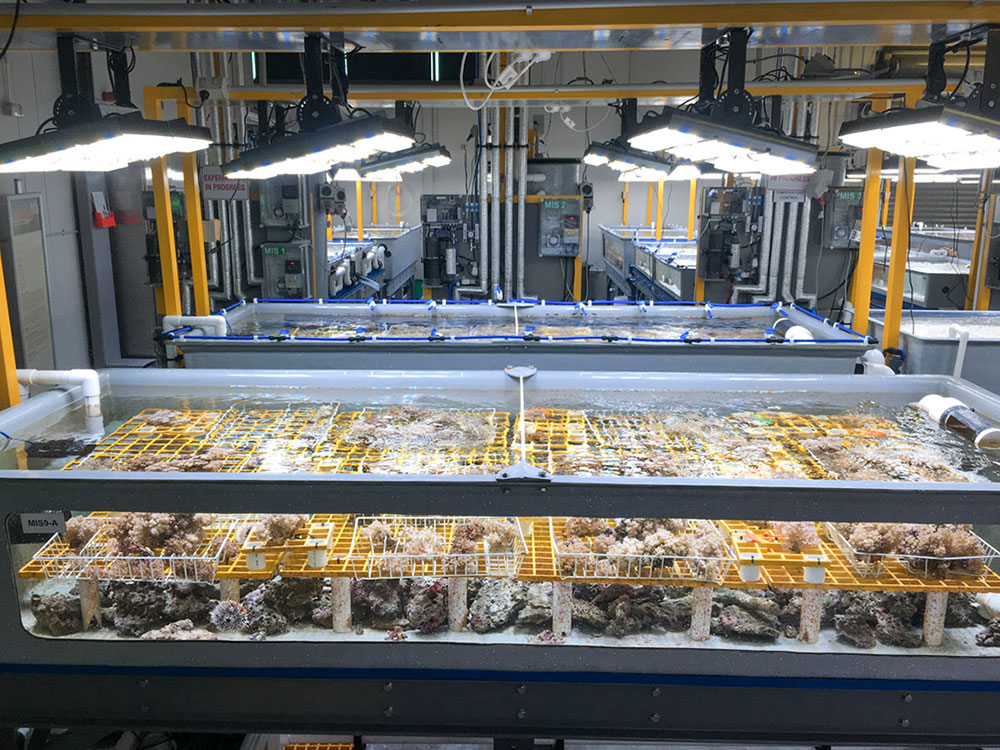The National Sea Simulator (SeaSim) is once again hosting its most exciting event of the year – reef spawning! Dozens of staff, students and visiting researchers are fully immersed in preparations for the November spawning – set to occur in the coming days.
A coral, collected from Trunk Reef in the central Great Barrier Reef, is full of eggs as the November spawning event approaches. Image: AIMS
Earlier this week, SeaSim’s expert technical staff were aboard the R/V Cape Ferguson along the central Great Barrier Reef in search of reproductively-fit coral specimens. The team collected 120 individual colonies from 10 different species. Now in the SeaSim, specialised infrastructure capable of replicating natural spawning conditions will support the corals in a laboratory spawning event.
SeaSim's Research Aquarist, Andrea Severati assists with locating reproduictively-fit coral at Trunk Reef in the central Great Barrier Reef. Image: AIMS
Amidst the excitement, lies an important question: What impact will this year’s unprecedented coral bleaching event have on spawning activity?
Existing research tells us that if corals survive and recover from bleaching, their health, in terms of available energy to invest in growth and reproduction, can be depressed for several years following the event. We also know that the populations of most coral species are ‘open’ – meaning that larvae from spawning on one reef can travel substantial distances before settling as young corals onto another reef. Therefore, it is hard to predict how spawning output can impact the number of young corals on the reef. To complicate things even further, recent studies suggest corals may respond differently to a change in the environment!
“Many people are surprised to hear that corals are animals, but we are finding that they are also unique individuals,” said Dr Line Bay, Senior Research Scientist at AIMS.
Our bleaching surveys, part of the Australian Institute of Marine Science’s (AIMS) Long-term Monitoring Program, confirm this observation. For example, some coral individuals were less affected by bleaching stress than others.”
“The coral spawning experiments in the SeaSim allow us to examine the mechanisms that underpin this variation. In essence, we are trying to understand the factors that make corals more tolerant to stress and to develop genetic markers to identify these individuals in nature.”
Reproductive fragments of corals collected from the field will produce the larvae needed for some of AIMS most innovative experiments. Image: AIMS
Coral larvae resulting from this year’s SeaSim spawning event will provide a ready-stock for research projects like this, and also allow researchers to examine corals’ responses to pollution and climate change.




